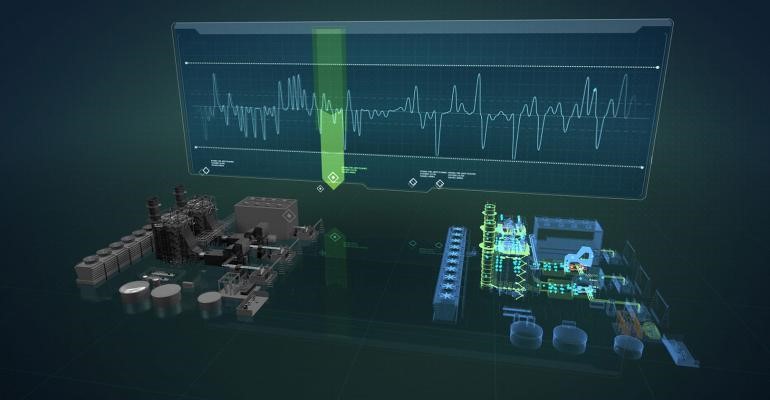Digital Twins - Improving Business with Alternate Reality
Intro to Digital Twins:
What is a Digital Twin? A Digital Twin is a virtual replication of a real-life device or process. Using IoT sensors and known data, a digital twin is the result of the combined information. Digital Twins also use historical data, weather data, performance data and more. The more data that can be included to replicate the product/process the more realistic the tests will be.
Imagine if someone entered the data from a car and its parts into a virtual model based in physics. All of the part's weights, functions, capabilities, defects and so on. This model could be used as a doppelganger to the real-life device to identify problems, view the real-time service and warranty information, and so much more.
Digital twins can be used for just about anything. Primarily, businesses are using them to mimic products and processes to identify problems. It allows that product or process to be used in a virtual world that can be changed or manipulated without fear of real-life consequence.
Digital Twin technology has actually been around for some time. NASA developed an early digital twin to simulate conditions on Apollo 13, and today utilizes a digital twin to monitor the entire Space Center.

Source: Javier Graterol
What are the Benefits of a Digital Twin?
- Better Reliability and Availability: Digital Twins can be accessed at any time. It is versatile and has the ability to act as a mutually exclusive device from its real-life counterpart .
- Less Risk: Since you're working with a virtual copy and not the real thing, you can test and break the inner-working functions of the model without causing real harm. You can push the limits to maximize results without fear of breaking anything.
- Increase Productivity: Digital Twins can be used to simulate the production process. Through incoming data, machine learning, and variable testing, the level of output from a process can be determined. Simulations can be used to determine maximum output, given the set of circumstances based in the virtual model.
- Reduced Overall Cost: Although the start-up cost to make a Digital Twin could be expensive, the cost-savings come from the usage of the actual model. Businesses can now gain insights regarding the physical asset without the actual costs that would be incurred for a real-life test or experiment.
What questions can a Digital Twin actually answer?
A model is only as good as the data it can provide. As seen in the video above, the Data Twin's value actually comes from the cheap and effective way to answer the tough questions that would normally come at a valuable price. If we wanted to answer the question, "How much weight can a part handle before it breaks?", we could test it virtually and we wouldn't have to actually break the part. This would save time and money. Let's look at some other valuable questions a Digital Twin could answer:
- If we add a specific machine to the assembly line, how will that affect potential output?
- How long will it take for a specific machine to break down?
- What are the general reasons causing our machines to break down?
- Is there any way we can improve our machine's parts to prevent break downs?
- When are employees the most productive and why?
- How can our employees reduce their workloads and still improve their productivity?
- Can we innovate our work-floors to use the work-space in a more effective way?
- Which people tend to be the most productive and which people hardly work?
- Are there any issues with our network that we could improve upon?
- Which equipment in the work-are are most used, and which are scarcely being used?
- What can we do to reduce resources being used, while maintaining the same level of productivity?
How is a Digital Twin created?
A Digital Twin is created by putting together experts and specialists in data science or applied mathematics. They must research the physics that surround the physical object or system being duplicated. Then, they create a mathematical model based on this data and inject it into digital space. The digital space is created to be as close to real-life as possible, so the model can flow within it, just as the object/system does in it's normal habitat. Also, IoT sensors are placed on the physical product and send constant data into the models. The object is to 'teach' the machine how it actually works in the physical world so it can be better mimicked in the digital one.This allows the twin to simulate the physical object in real time, in the process offering insights into performance and potential problems.
The amount of data you can put in is seemingly endless. The more data you can provide, however, the more refined and 'realistic' the concluding solutions will be. The models should constantly be learning from the physcial object/system. For example, if it is a product being used outdoors a lot and the weather in the area is particularly humid, that needs to be a part of the model. A product's weight, stress, usage time, individual parts and functionality, and even biological factors are all important bits of data. The model can be simple or complicated, but the rule of thumb is: the more data the model can use, the better it will perform.

Fig: Plant's Data Twin
Example - Source
The Future of Digital Twins
This is only the beginning! Digital Twin technology's potential is nearly limitless. Consider for a second, all these industries and what they can do with this technology: Architecture, Health, Construction, Manufacturing, Information Systems and Security, Pharmacutical, Business Development, and more! As Digital Twin's become smarter, they will continue to incorporate machine learning, AI, self-repairing procedures, more realisitic augmented reality, and enhanced training simulators.
Later on, we expect there to me much more complex systems developed. From the human body to entire cities, the Digital Twin technology could do so much in helping us analyze and find solutions to complex problems. But, for now, it is mostly being used by small and midsize businesses with less involved analytical software. As time goes on and the technology becomes more affordable and the models become more enriched and prove their effectiveness (through case studies), we expect this technology to be much more popular with large-scale corporations and the government.

